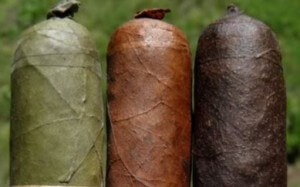One of the very first things aside from the specific brand and ring gauge size that’s displayed in cigar advertisements or gone over in a cigar review is the wrapper. But why is this? Does it effect the cigar in any meaningful way or is it just there for aesthetic purposes? These are the questions we will be answering in this article.
The first thing to note is that a wrapper is certainly more than just decoration. Any given cigar wrapper will have a impact on the flavor. The reason for this is that the wrapper, unlike the filler or binder, is positioned on the outside of the cigar. Because it’s on the outside, it’s exposed to more air and this brings out the flavor. Indeed, it’ll (in most brands) account for anywhere from 60% to 90% of a given cigar’s total flavor.
This is the reason why cigar aficionados pay so much attention to the kind of wrapper a given cigar is made with. For instance, if one has, say, a mild wrapper leaf, such as the Connecticut Shade, the flavor will be quite smooth and mild (generally characterized by its leathery taste and pepper notes) in stark contrast to something like a more robust wrapper leaf such as the corojo, which’s known for it’s powerful kick of pepper notes and spice. The other two most common ones, the maduro (meaning ripe) and the habano, will also have their own unique effects upon the flavor, so keep that in mind the next time you find yourself browsing on The Cigar Store.
As you can see, a cigar wrapper leaf will definitely contribute to a cigar’s flavor; indeed it’ll contribute to most of it. With that being said, for those who’ve a very picky and specific palette, it’d be wise to familiarize yourself with the so called “big four” as well as the other more popular (or up-and-coming) cigar wrappers.

